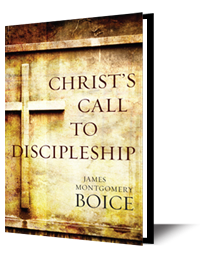
Following this battle, Moses erected an altar. The name he gave to it introduces another name for God: Jehovah Nissi, which means “the LORD is my banner.” The Lord is the banner around which we rally, and who gives the victory.

A fourth parallel is that the manna gathered daily had to be eaten. It was not enough to see it on the ground, appreciate that it arrived that morning, gather it up, and then do nothing else with it. The purpose of the manna was to feed the people, which means they needed to eat it. In the same way, you and I have to do that with the Word of God. Moreover we have to do it bit by bit.

God had provided food for the Israelites. We are told that they were to gather the manna each morning, just enough for each individual. They couldn’t keep it until the next day because it would spoil. On the sixth day they were to gather a double portion because it wouldn’t be provided on the Sabbath, when they were to rest. There is one other interesting thing about this and it does give us an idea on how we’re to interpret the manna. They were to take an omer of it, put it in a jar, and then put it before the ark of the covenant. Now at this point that is an anachronistic reference because they didn’t yet have the ark or the tabernacle. But later, when these had been constructed, they were to take some and lay it up in the holy place of the tabernacle as a remembrance of what the Lord had done (see Deut. 8:2-3). At the end of this passage from Deuteronomy 8 we see that “man does not live on bread alone but on every word that comes from the mouth of the LORD.”

After the water at Marah was made sweet for the Israelites to drink, God said, “If you listen carefully to the voice of the LORD your God and do what is right in his eyes, if you pay attention to his commands and keep all his decrees, I will not bring on you any of the diseases I brought on the Egyptians, for I am the LORD who heals you” (15:26). Just as He healed the water, you see, He’s going to heal them.

As Christians read these stories in Exodus, they see parallels to the Christian life. We think of Canaan, the land to which they’re headed, as being a picture of heaven, and the passage through the wilderness representing the pilgrimage of this life. The parallels are not always exact, but certainly they are in this respect: the people were not mature; they had to learn to trust the Lord and see His provision for them. And seeing how God provided for them during those years of wandering is very instructive for us as we go through life as Christians.

















